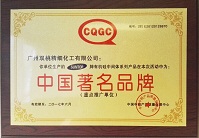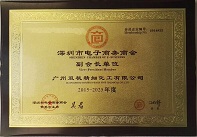
![]() E-mail: admin@gz-chemical.com
E-mail: admin@gz-chemical.com
Email us,best price and silane solutions for you!
Tel:+86 (20) 29035969

![]() E-mail: admin@gz-chemical.com
E-mail: admin@gz-chemical.com
Email us,best price and silane solutions for you!
Tel:+86 (20) 29035969


Methyltrimethoxysilane.
Synonym: Метилтриметокси-силан
Countertype of Dynasylan MTMS, DowCorning Z-6070, Z-6366, ShinEtsu KBM-13, Wacker M1-TRIMETHOXY, Silquest A-1630
Chemical Structure

Introduction
DP-311, an alkylalkoxysilane is an important component in sol-gel system. It is a colorless liquid. It hydrolyzes slowly in the presence of moisture (methanol is released) to form reactive silanols. These react further to produce oligosiloxanes and then poly- siloxanes.
Chemical Name: | Methyltrimethoxysilane |
CAS No.: | 1185-55-3 |
EINECS No.: | 214-685-0 |
Empirical Formula: | C4H12O3Si |
Molecular Weight: | 136.3 |
Boiling Point: | 102°C [760mmHg] |
Flash Point: | 5°C |
Color and Appearance: | Colorless clear liquid |
Density [25°C]: | 0.950 |
Refractive Index [25°C]: | 1.369 [25°C] |
Purity: | Min. 99.5% (A Grade) Min. 99.0% (B Grade) |
Applications
DP-311 is highly miscible with standard organic solvents, such as alcohols, hydrocarbons and acetone.
DP-311 is practically insoluble in neutral water and reacts only slowly to form silanols and higher condensation products. Addition of a hydrolytic catalyst (inorganic/organic acids, ammonia or amines) accelerates the hydrolysis of DP-311 substantially.
DP-311 is used mainly to render a wide range of surfaces and materials water repellent (e.g. mineral fillers, pigments, glass, cardboard). DP-311 may be used pure or in solution to treat fillers, using suitable mixing equipment. It may be necessary to first pre-treat the substrate with water and/or a catalyst.
DP-311 is also used in the production of silicone resins and condensation-curing silicone rubber.
DP-311 is used as an important component in sol-gel systems.
[Alkoxy Crosslinkers] The most common alkoxy crosslinkers are methoxy or ethoxy silanes due to their high reactivity. The reaction precedes by nucleophilic substitution usually in the presence of acid or base catalysts. Alkoxides react directly with silanols or with water to produce silanols. The newly formed silanols can react with other alkoxides or self-condense to produce a siloxane bond and water. When an acid catalyst is used, protonation of the alkoxysilane increases the reactivity of the leaving group. When a base catalyst is used, deprotonation of the silanol forms a reactive silonate anion. The by-product of the reaction is an alcohol. Common metal catalysts for these reactions are alkoxytitanium derivatives and dibutyltin dicarboxylates
Packing
Net weight 190Kg steel drum





Guangzhou Double Peach Fine Chemical Co.,Ltd
Address: No 3401 Huangpu East Road, Huangpu District, Guangzhou, China
Tel:+86 (20) 29035969 Fax:+86(20)29035979
Tel/Wechat/Whatsapp:0086 13826126978 admin@gz-chemical.com